Serpentine Communications
4930 Saint Elmo Ave. Bethesda MD 20814
Tel: (301) 654-2224 Fax: (301) 656-1658


| Contact Artemis |

| Contact Yasmin |
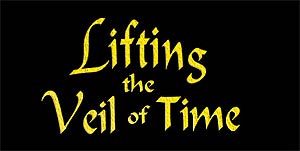
This program is a film adaptation of the performance presented by the Maryland-National Capital Parks and Planning Commission at Harmony Hall in Prince George’s County, Maryland entitled Dance and Music of the Middle East. Our goal was to present these very ancient and diversified dances in a visual form that would allow the viewer to follow it’s evolutionary history.
To order this film on-line .
ANCIENT EGYPTIAN AND GREEK DANCE by Artemis
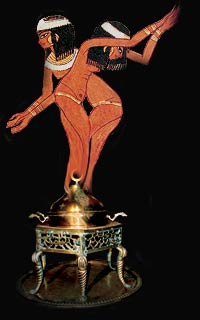
This interpretive piece is based on extensive research of the ancient dances of Egypt and Greece. These are but two of the many roots for what is currently called Oriental dance.
PERSIAN COURT DANCE by
This dance was inspired by the art of the Middle Ages. The music is in a 6/8 time signature, popular at that time. The second piece is a modern rendition of this form of dance, famous for it’s intricate footwork, graceful postures and flowing arm and hand work.
VEIL by Artemis
The ancient Greek women danced with veils. This mesmerizing art was introduced into Oriental dance in the 20th century.
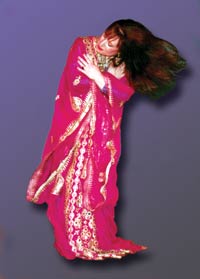 SAUDI ARABIAN WOMEN’S DANCE by
SAUDI ARABIAN WOMEN’S DANCE by
In Saudi Arabia, where social events are sexually segregated, there is a rich tradition of women entertaining women. Imagine a room draped with carpets and hazy with incense smoke. Laughter fills the air. Women are chatting, sipping small cups of heavy, perfumed coffee and eating delicate pastries. The music begins and one or more women rise to dance…
TURKISH SPOON DANCE by Amira Yasmine
As early as the 18th century, Turkish dancers have performed with hand-held percussion instruments such as clappers, finger cymbals and wooden spoons. The choreography is based on folkloric steps from Anatolian Turkey.
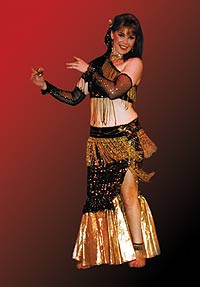 FINGER CYMBAL SOLO by
FINGER CYMBAL SOLO by
The syncopated rhythms of the Middle East are highlighted in this combination of dance and percussion.
EGYPTIAN CANE DANCE by Yasmin
This dance originated as an imitation of the male stick dance. It quickly took hold in the cabarets at the turn of the century when the dancers would pass among the tables and playfully use objects belonging to the customers (canes, swords, drinking glass, etc.) as props.
ORIENTAL SWORD DANCE by Adena
In a world where women carry heavy bundles and water jugs on their heads, it is not surprising that they are adept at balancing objects. Besides in the cabaret dances, the sword was also used as part of a wedding tradition where the bride would dance with it to signify cutting the ties with her family of origin as she united with the family of her husband.
GYPSY SKIRT DANCE or KARSILAMA by Artemis
This fiery dance is an interpretation of the early gypsy dances of Turkey. The rhythm, called karsilama, is in a 9/8 time signature. It was said that these dancers could "melt a stone" with their swirling skirts, shimmying hips and fast paced finger cymbals.
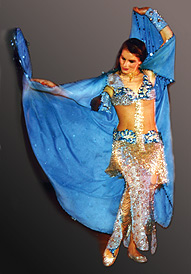 EGYPTIAN STYLE ORIENTAL CABARET DANCE by Yasmin
EGYPTIAN STYLE ORIENTAL CABARET DANCE by Yasmin
An example of a modern day dance number from a night club performance.
TURKISH GYPSY DANCE by Artemis
The gypsies first appeared in Turkey in the 11th century. With their passionate music and dance they soon became an integral part of Turkish daily life. At social events and in the coffee houses, baths and public parks, gypsy boys and girls what is commonly known as "floorwork," where the performer descends to the floor while continuing to dance. "Floorwork" was incorporated into the Oriental dance of other countries. However, with the recent rise of Islamic fundamentalism, it has been banned from public performance in many places.
DRUM SOLO by the entire cast
Rhythm is the heart of Africa. As the dance made its way from the desert to the world of the theater, the love for the drumbeat persisted. Now, the drum solo is an integral part of all cabaret performances.
Biographies
Principal performer: Of Greek and Turkish descent, Artemis has performed in Europe and throughout the United States. She owns a dance school in the Washington area and teaches workshops throughout the country. Artemis is also a writer and dance historian; her articles on women’s issues, dance and travel have been published in the United States and abroad.
YASMIN
Yasmin began her dance career at 19 on the left bank of Paris. Since then she has performed in London, Cairo, Tunisia, Morocco, New York, Cannes and Monte Carlo. She has appeared in numerous videos and European television productions with well known Arabic artists.
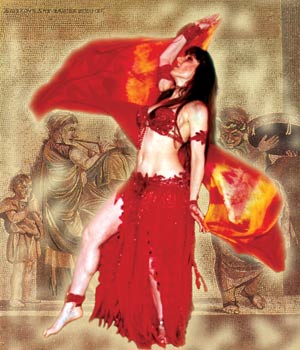 ARTEMIS
ARTEMIS